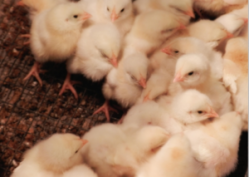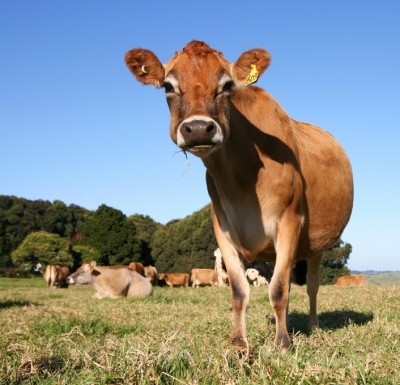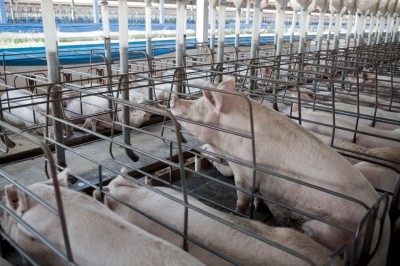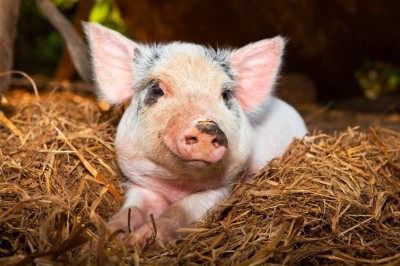Can cassava replace corn in poultry feed?

A group of researchers in Thailand tracked poultry production results when up to half of birds’ diets were replaced with cassava and varying protein levels. They also noted nitrogen amounts in bird manure.
The team sought to establish if cassava could be used as a less expensive feed ingredient while maintaining bird growth and if use with reduced protein levels would limit nitrogen pollution, they said.
“The dietary crude protein [CP] could be reduced to 95% CP from the breed recommendation to retain the highest growth performance and the ileal protein digestibility with the highest EEF [European Efficiency Factor] and lowest feed cost/kg live weight but no advantage on nitrogen excretion,” they said. “For the alternative energy source, cassava could substitute corn at the level of 50% without impairing any measuring variables.”
Nitrogen expulsion and cassava use
In poultry production, chickens cannot absorb all the nutrients fed and levels of nitrogen are excreted, said the researchers.
“The exceeding threshold levels of both reduced and oxidized forms of nitrogen can cause many problems, such as respiratory diseases, algae blooms, low water quality, imbalanced ecosystem, climatic changes, and soil acidification (Ndegwa et al., 2008,” they said. “Therefore, level of nutrients in broiler diet should be reconsidered.”
Reduction in CP can limit nitrogen excretion, but it also may make diets more expensive as synthetic amino acids are added, they said. Use of a purely corn-based diet also can increase cost.
Previous research looking at the use of cassava in poultry diets has found that it can replace about 50% of corn use, said researchers. “Interaction between protein level and energy sources should be investigated,” they added.
Experiment
In the experiment, 2,688 chicks were split into eight groups, said researchers. The experiment had two phases – days 1-21 and 22-42.
Diets tested included corn (CO) or 50% corn and 50% cassava (CC) and protein levels of 100, 95, 90 and 85% of recommended levels, they said. “The protein levels in the diets were 190, 180, 171, and 161 g/kg for the starter period, and 180, 171, 162, and 153 g/kg for the finisher period,” they added.
Levels of essential amino acids, methionine, lysine, threonine and tryptophan, were sustained at industry recommendations, they said.
Bird weight was recorded on days 1, 21 and 42, they said. Feed intake, average daily gain (ADG) and mortality rates were noted, said researchers. Protein levels in the ileal content were checked and feces were examined for nitrogen amounts.
The apparent ileal protein digestibility coefficient was calculated along with the feed conversion ratio (FCR), feed costs per kg live weight (USD) and the European Efficiency Factor (EEF), they said. A sample of birds was fed 2.5 g/kg chromic oxide to test ileal contents.
Results
Initially no interaction was noted between the energy source and protein amounts in the feed, said researchers. Final body weights, ADG, ileal protein digestibility and feed intake were similar among the different experimental diets.
Feed conversion ratio (FCR) in the group getting 85% protein was higher than for birds getting more protein, they said. No difference was seen between energy sources.
During the second phase, there was an interaction between protein and energy sources documented, they said. Feed intake did not change for protein levels, but was higher for birds getting CC feed and they had an elevated FCR.
“At 85% CP level, the birds in CC group had the highest feed intake while the CO group had the lowest,” they said.
Birds getting the lowest amount of protein had a reduced body weight, ADG and higher FCR compared to birds on other diets, said researchers.
“The ileal protein digestibility of the group with the highest protein level was significantly different from 85–90% CP,” they said. “Birds fed with CO diets had significantly higher ileal protein digestibility than those fed with CC diets.”
Dietary protein levels also altered the amount of fecal nitrogen during both phases, they said. Limiting the amount of protein by 10% or more from the recommended level reduced nitrogen amounts.
Energy source did not alter feed price, but the amount of CP included did, said researchers. The 85% CP diet had the lowest EEF and highest cost, while the 95% and 100% diets had similar EEF results.
“The energy sources did not affect both parameters: EEF and the feed cost/kg live weight,” they said. “Therefore, cassava could be used to substitute for corn at the level of 50% at any protein level without affecting the economic returns.”
Source: Animal Feed Science and Technology
Title: Effects of protein reduction and substitution of cassava for corn in broiler diets on growth performance, ileal protein digestibility and nitrogen excretion in feces
DOI: available online before publication: doi:10.1016/j.anifeedsci.2016.03.022
Author: N. Boonsinchaia, M. Potchanakornb, S. Kijparkorna,









